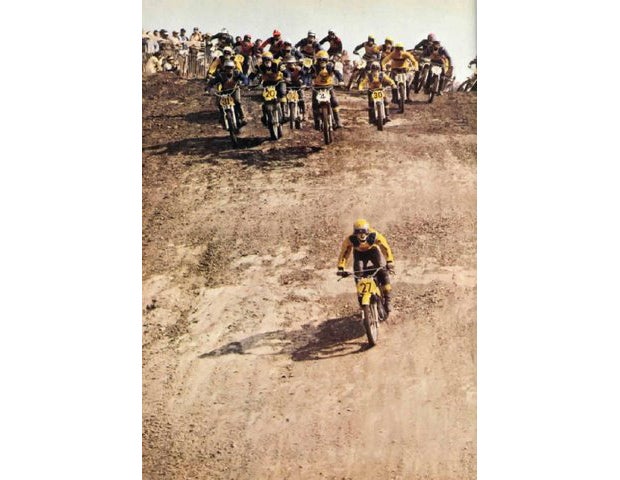
In 1972, a Swedish motocrosser named Ake Jonnson burst on the scene at the Trans-AMA motocross series in the U.S., and he absolutely dominated the best racers in the world on a nearly stock Maico. DeCoster, Mikkola, Kring and all the rest spent race after race looking at the back of Johnson's jersey. He won nine races in a row.
I spent some time with Ake and even had a chance to take him riding in the desert, which he enjoyed immensely. Later on we sat down and talked about his huge winning streak and how he got started in the sport. Heres the original interview from back in 1973.
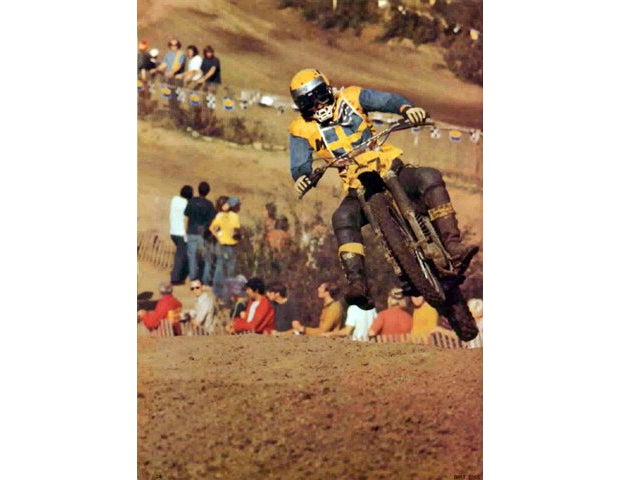
***
Rick Sieman: Think back for a moment when you started. What kind of motorcycle did you start riding on?
Ake Jonsson: My very first bike? A Swedish made frame with a DKW engine. Then I changed it and put in a 250 engine. The bike was called an MV and I was only 15; it must have been 1958.
Rick: Did you do any good on that bike?
Ake: No. I had it for fun riding in the woods and everywhere else. Then I started Enduro racing in 1961, when I was 17, so I really only rode maybe three or four years before I start racing, but the bike was fairly fast and reliable. It didn't break much and I didn't have much money needed to buy anything new. So I made my military service in 1963 and would race on the weekend and make a first or second, so I could make some money.
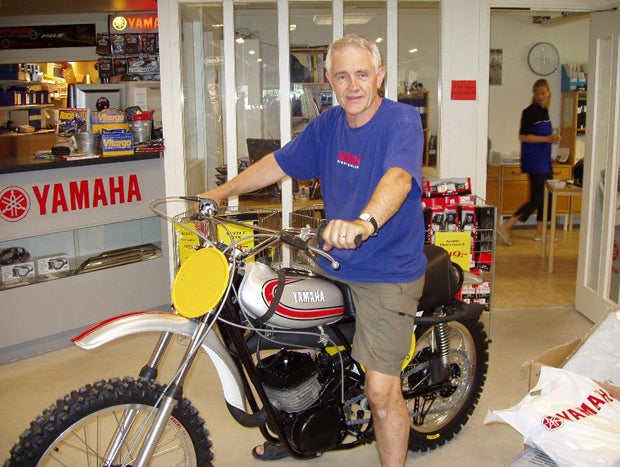
Rick: What kind of money did you make?
Ake: I maybe made $30 for a win, but it was good enough to keep me going for a week. I put 20 races on it for a season, 60 motos all in total. There were three championship races that year in which everyone could race. I could just take a chance to go there far away to the south - 18 hours. That was the last race of the three. I got a chance racing and I made third place there. So then I was in the Grand Prix races for the next year. The 15 best in that championship and you start with a qualifying anything next year. At that time I ordered a Husky 250 engine, just the engine. I couldn't afford the whole bike. I used the old frame and made it stronger, and then I bought the engine.
Rick: You have any idea what the bike weighed?
Ake: I don't know, maybe 104 or 105 kg - that's about 235 pounds. And I was, I think, third or second place in the championship and then got a second. I almost beat Torsten Hallman and he was the only factory rider there at that time. So I had a friend of mine who knew the people at Husky. My frame was very bad at that time, cracked everywhere. He phoned them an asked if I could get a frame. They said they would get a frame, but I never saw it. So later we had the third race in the championship and it was in my hometown. Husky called and said we have a bike if you want to come down and pick it up. I took off school the next day. I would think of a change of handlebars and a little bit of practice, and that was it.
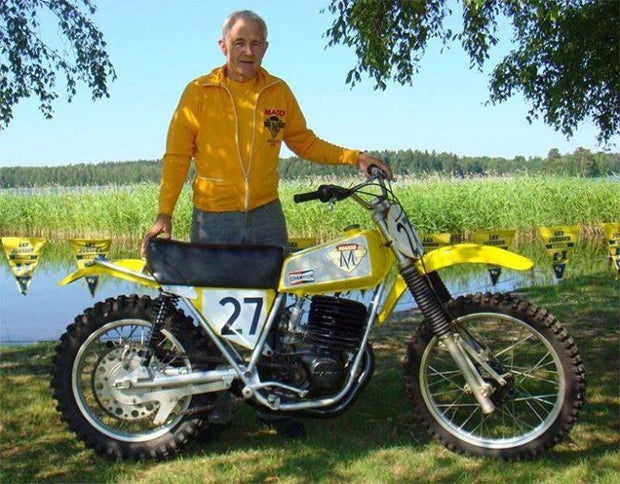
Rick: Was it good?
Ake: Yeah, but it was so new for me. I really didn't know if I was going fast or not. I was strong, racing a lot and won a few races. After that Husky invited me to represent them at Finland in the Grand Prix there and I made second and I almost beat Robert.
Rick: So after your mandatory time in the military you got a full factory Husqvarna ride. How long did you stay with Husky?
Ake: Four years and then in 1969 I started with Maico.
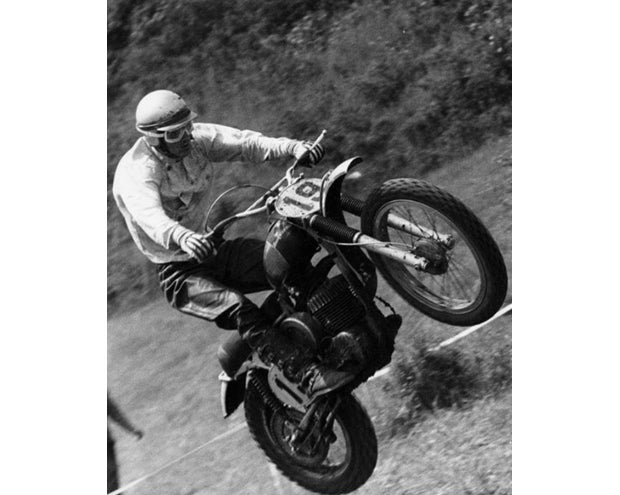
Rick: After you went with Maico in 1969, you came close the World Championship several times. Tell us about that first year in 1969.
Ake: Everything broke down in every race; it was a very bad year. I had to ride the 360 and it was nothing but problems. Then in 1970 they brought out the 400 and I did good on that in the championships. In 1971, Willie Bauer and I rode square-barrel Maicos and they were good bikes.
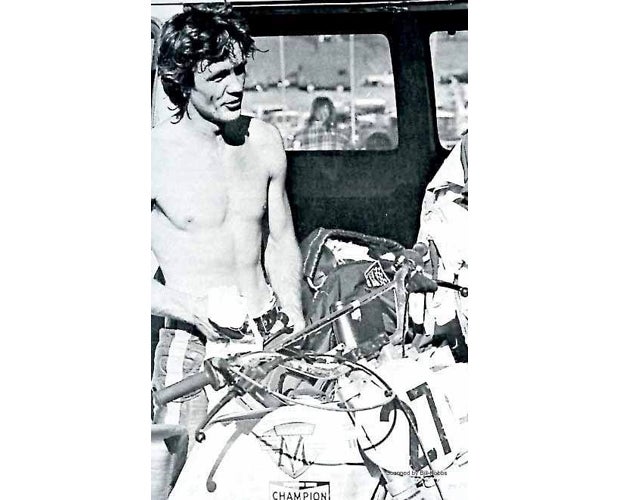
Rick: I know you like the Maico and it is working okay for you right now. You've got some kind of an engineering background. If you're going to build the motorcycle just from scratch, with a clean sheet of paper, what would it be like?
Ake: Probably like a Maico. Id start from the beginning, but the thing is that it's much easier to build bike now right that it was four years ago.
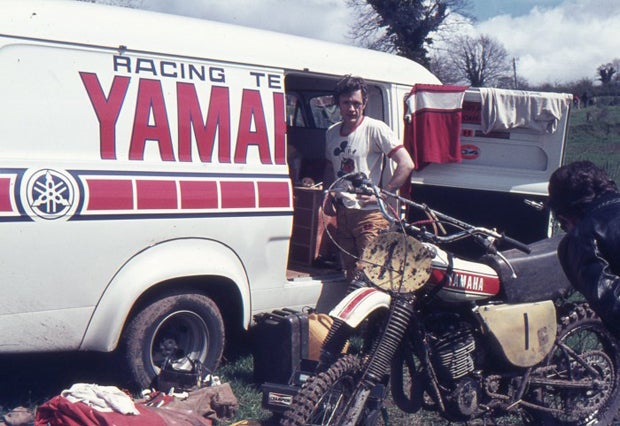
Rick: You're on a good streak now. What got you this good feeling? What is it?
Ake: I just feel that I can handle a bike and make it go fast. Right now, I think I have the best chance on the Maico. Everything is just right for next year. But even more importantly, I know what they must do to a machine to make it just right to fit around my body. All the little things are so important. When your bike is right and ready, you're not even aware of it when you're riding and even with the fast speeds this the most important thing. Giving a rider much money for making power or power all the time and not enough to make the bike comparable is wrong. I personally feel the suspension is most crucial part of the motorcycle. In fact, the factory has always offered me much more power than the standard engine and frame. If the porting is somewhat cleaned up some, you can spend more time about the suspension; a few pounds difference front and rear are critical. I have no need of so-called special components. All this takes what I have around to the proper combinations reached. I read of a story in the press about special parts that I use. It was all wrong. I see the very machine is set properly. Very few will properly set up a machine.
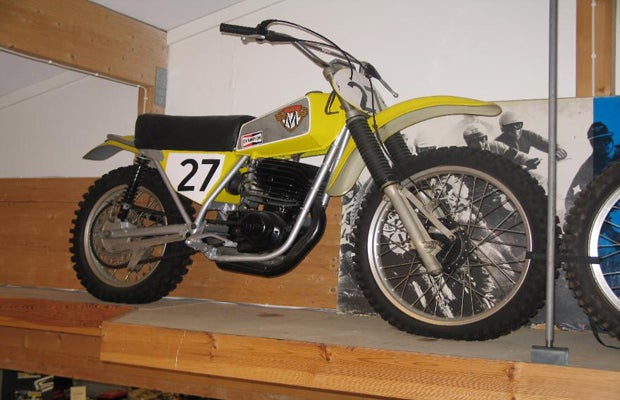
***
Today, Ake lives in Sweden and has a Yamaha distributorship. He looks back on those years when he was a dominant force with a certain amount of pride. Well-earned pride, at that.


 Your Privacy Choices
Your Privacy Choices